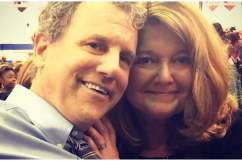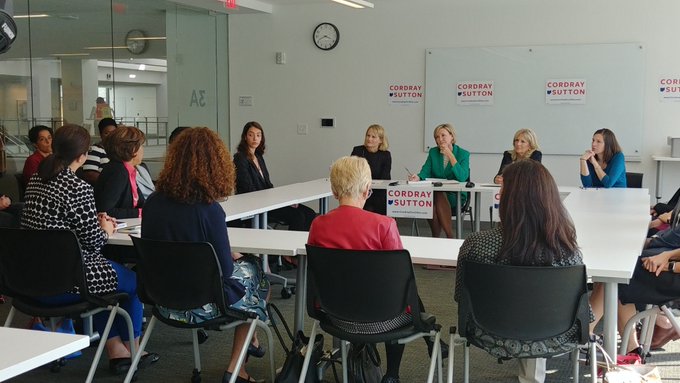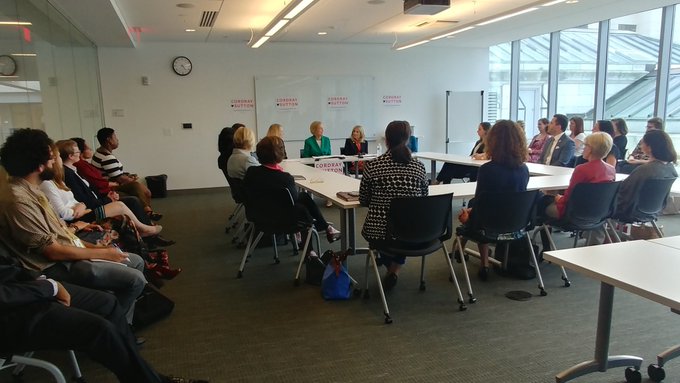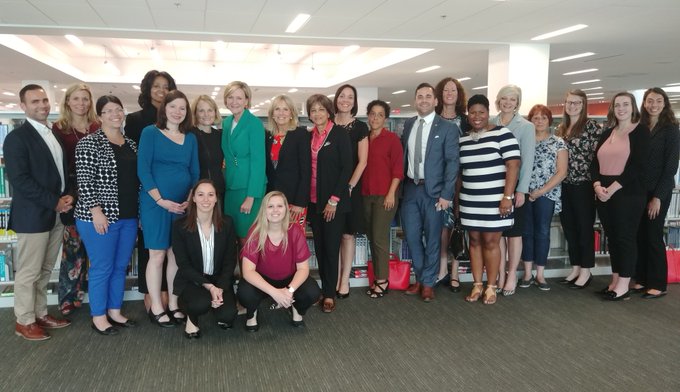
Getty Richard & Peggy Cordray in Washington, D.C. in 2013.
Margaret “Peggy” Cordray is the wife of Ohio 2018 Democratic gubernatorial candidate Richard Cordray, who lost the race to Mike DeWine. Peggy is a respected law professor at Capital University in Columbus.
Here’s what you need to know.
1. Richard & Peggy Cordray Have Been Married Since 1992 & Have Twin Children
Richard and Peggy Cordray tied the knot in 1992. On July 11, 2018, Richard publicly celebrated their 26th anniversary by sharing a photo of them cutting the cake on their wedding day. He wrote, “Happy 26th anniversary to my wife and partner, Peggy Cordray. I love you so much!”
The family lives in Grove City, a suburb of Columbus located about 10 miles south of the city center. The Cordrays have two children, fraternal twins named Holly and Danny.
According to his Facebook page, Danny was a student at Duke University. Holly appears to have been on the drill team and danced during high school, based on her Facebook photos.
2. Peggy Cordray is a Professor at Capital University Law School in Columbus, Ohio
Peggy Cordray earned a bachelor’s degree from the University of the Pacific in Stockton, California. She graduated summa cum laude. She went on to earn a law degree from the Boalt Hall School of Law at U.C. Berkeley. Cordray completed her formal education with a Bachelor in Civil Law degree from Oxford University in England.
Cordray joined the faculty at Capital University Law School in 1992. According to her bio, “she currently teaches Evidence, Contracts, and Interviewing & Counseling.”
3. Peggy Cordray Designed a Program That Connects Law Students With Homeowners Going Through Foreclosure
One of the programs Cordray is best known for spearheading at Capital is the Foreclosure Mediation Preparation Project. It is a pro bono program that helps to educate homeowners about what to expect before going through mediation. Law students work directly with people going through foreclosure. The program is run in conjunction with the Franklin County Courts.
Cordray described the project on its website. “People are coming into these mediations representing themselves. It’s very stressful and intimidating. Many of them have absolutely no idea what mediation is. They don’t know what to expect. They think a judge will be deciding their case that day. They often come without the necessary documents…
It was important that the law students have a role that is meaningful for the person they are working with. This had to be valuable and educational for the students as well. We didn’t want the students doing just clerical work.”
Cordray said that more than 100 students signed up for the program when it first launched in 2010. She explained on the program’s website that one of the goals is to give law students real-world experience.
“I think virtually every student comes to law school wanting to do good, to be helpful. Almost all of our students have a sincere desire to help people in need. Students are also eager to get real-life experience and skills training. They rightly recognize this as an opportunity to do client counseling, which is an incredibly important skill. It’s very hard to learn that in a classroom.”
4. Professor Cordray Has Done Extensive Research on the Supreme Court & Has Written Several Articles Focused on How the Justices Select Cases
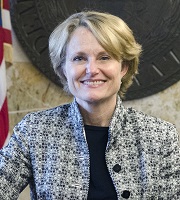
Margaret “Peggy” Cordray, professor at Capital University Law School.
Professor Peggy Cordray has written extensively on the Supreme Court. Specifically, she has focused on how justices decide which cases the high court should hear and which to send back to the appeals courts.
Cordray’s articles have been published in various journals including the Kansas Law Review, the Ohio State Law Journal, the Arizona State Law Journal, the Hastings Law Journal and Washington University Law Quarterly. Her husband Richard is listed as a co-author on several of the publications.
In 2009, her article “Setting the Social Agenda: Deciding to Review High-Profile Cases at the Supreme Court” was published in the Kansas Law Review. She wrote about how the high court has the power to influence political discourse and impact society. She analyzed how justices may be impacted by high-profile cases, and whether they “act differently” in how they handle these types of cases. She wrote in part:
“Although the Justices are relatively isolated from the daily concerns and struggles of most Americans, it seems certain that they not only are aware of which issues lie at the heart of the country’s social and political agenda, but have their own deeply held views about those issues. What we seek to assess, as far as the Justices’ voting records permit, is how the Justices approach the cases that present these issues.
One possibility is that the Justices behave even more strategically than usual in such cases to achieve the results that they desire. Individual passions run high when issues such as abortion, religious freedom, gay rights, and affirmative action are involved. With regard to such issues, each Justice generally has clearly formed views and a keen interest in
seeing those views reflected in legal doctrine. Moreover, each Justice usually is able to develop a strong sense of the other Justices’ positions, and how the Court will likely resolve the case on the merits. There would thus seem to be strong temptation to vote based on the expected outcome, given the ideological stakes and the ease of casting a forward-looking vote at the threshold stage.”
You can read the full article here. The full list of Professor Cordray’s research articles is found on her university bio.
5. Cordray Recently Participated in a Roundtable Discussion Alongside Dr. Jill Biden & Her Husband’s Running Mate, Betty Sutton; the Conversation Focused on Women’s Challenges in the Workplace
Peggy Cordray was one of the featured speakers at a discussion about women in the workplace. The event was put on by Richard Cordray’s campaign and was held in Columbus on October 3. The main topics of discussion included how to shrink the wage gap between men and women, stopping harassment and erasing negative stereotypes about working mothers.
Former Second Lady Dr. Jill Biden was in attendance. She talked about how in her first teaching job, she was paid $7,500. A man who was hired to do the same job was paid $10,000.
READ NEXT: Taylor Swift: Rep. Blackburn’s Voting Record ‘Appalls & Terrifies Me’



